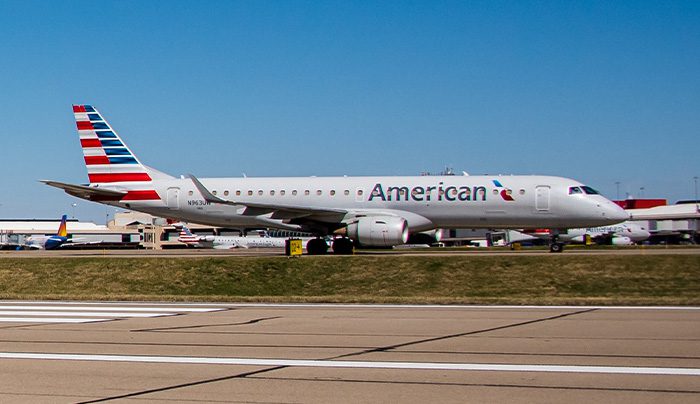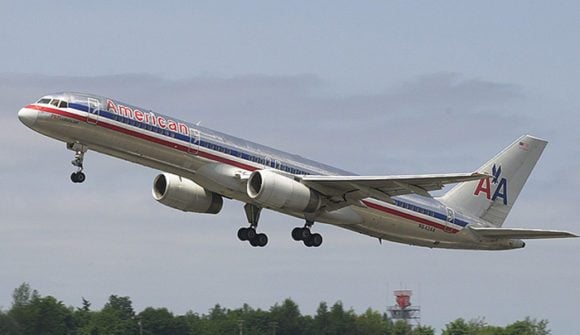
American EmbraerE190
American Airlines reported a $-2.2 billion Q1 net loss on April 30, four times the size of its main competitor Delta ($-422 million). This includes special items, otherwise, the result would have been $-1.1 billion. Still, it is another indication of how the current crisis is impacting even the richest and strongest airlines in the US.
CEO Doug Parker described the crisis as “a significant challenge”. In Q1, revenues dropped almost 20 percent to $8.515 billion while expenses rose 8.4 percent to $11 billion. The operating result was $-2.549 billion, down from a $375 million profit in the same period last year. Some 7.7 million fewer passengers enplaned AA’s fleet, with RPKs down in double digits on all fronts. Domestic was -15.5 percent, international -22.1 percent. That’s on average, with the Pacific -45.5 percent. Traffic will be down by 80 percent in April and May and 70 percent in June. Refunds cost the airline $900 million and could rise to $1.2 billion in Q2.
The recipe for recovery – whenever this will be – is the same at American as with all airlines: reducing costs and cash burn, bolstering liquidity. On the personnel front, some 39.000 employees have opted for either early retirement, furlough, and reduced work schedule, and partially paid leave. Recruitment of new staff has been suspended. Parker finds it hard to tell what size the company will be but concedes there won’t be enough work for everyone.
The Boeing 757 has served American for 33 years. (American)
A major slice in cost savings will come by early-retiring 80 aircraft. These include 20 Embraer E190s, 34 Boeing 757s, and 17 767s, plus 9 Airbus A330-300s. The E190s and 767s were planned to leave the fleet by the end of the year but this has been brought forward. Retirement of the four types represents a $676 million non-cash write-off on aircraft and spare parts, plus $68 million in write-offs on ‘right-of-use-assets’ and lease return costs. Already retired in Q1 have been some regional aircraft like the Embraer E140 and 19 Bombardier CRJ200 with PSA Airlines.
Reductions bring the fleet to some 850 aircraft. Retiring older A320s, A330-200s, and Boeing 737s or returning them to lessors when contracts lapse in the next two years are future options to reduce the fleet.
Cost and Capex savings should bring $12 billion
Including cost reductions and Capex resizing, American expects to save $12 billion. Capex still includes $1.7 billion in fleet renewal. American expects to reduce daily cash burn from $70 million by early Q2 to $50 million in June.
The airline ended Q1 with $6.8 billion in liquidity after it raised $2 billion during the quarter and draw $1 billion from a delayed draw term loan facility, plus $477 million in aircraft finances.
AA has been granted $10.6 billion in aid under the CARES act. This comes in two forms: a $4.1 billion direct aid and a $1.7 billion low-interest rate loan, while it plans to draw $4.75 billion from a loan guaranteed under the same act.
Total liquidity stands now at $17.4 billion and Parker expects this to be some $11 billion by the end of the current quarter. If needed, American has available $10 billion in unencumbered assets of which $2 billion is aircraft and spares and $5 billion is slots. AA has no intention to close hubs.
From May 31, American will only offer 50 percent of available seats on each aircraft by blocking middle seats unless they are necessary. This policy will continue to evolve. Passengers are encouraged to wear face masks. While planned new routes have been suspended, American has re-entered the cargo-only market from March and had since expanded a network using passenger aircraft.
Views: 0




